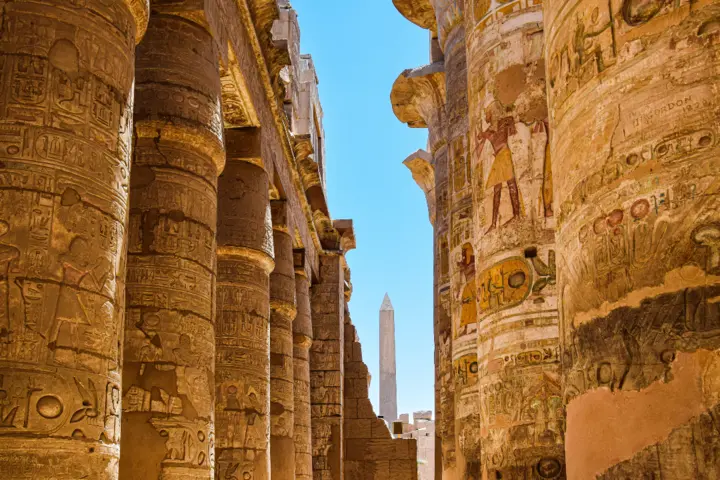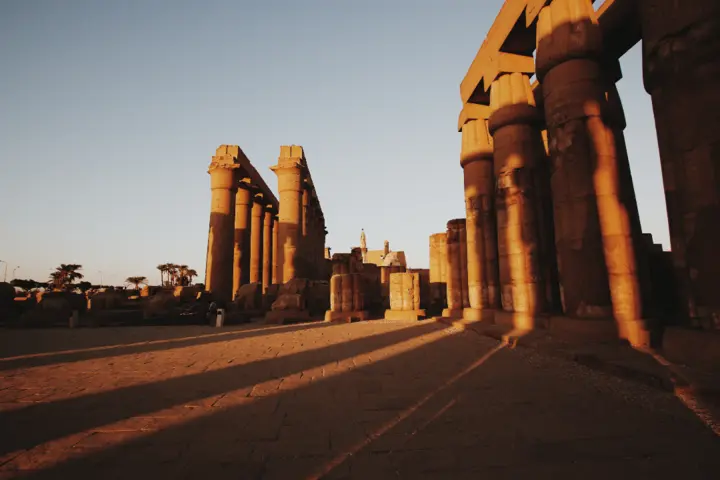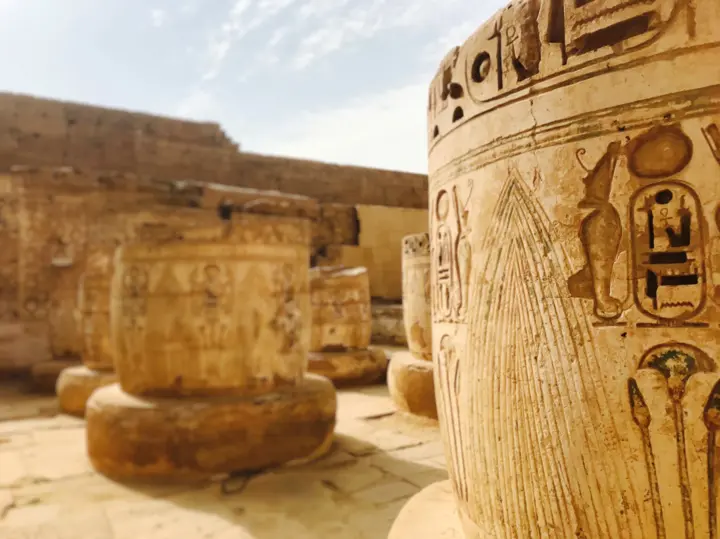Explore the temples of the pharaohs and the treasures of the West Bank
Exploring the temples of the pharaohs and the treasures of the West Bank is one of the most wonderful experiences that can be lived by lovers of trips and travel. Egypt has a rich cultural heritage and history spanning thousands of years, making it an essential destination for those wishing to dive into ancient history and civilizations. The west bank of the Nile in Luxor occupies a prominent place among Egypt's tourist attractions, with an impressive collection of temples and royal tombs built during the era of the pharaohs.
A tour of the West Bank: the cradle of ancient Egyptian civilization

The west bank of the Nile in Luxor represents the heart of pharaonic civilization, as it includes many temples and tombs that embody the greatness of kings and pharaohs. One of the most prominent of these sites is the Valley of the Kings, where the tombs of the famous pharaohs such as Tutankhamun are located. This valley is not just a burial place, but a witness to the ancient Egyptian tradition of honoring their kings and ensuring their eternal life in the afterlife.
Recommend
Besides the Valley of the Kings, there is the mortuary temple of Hatshepsut, which is considered one of the most prominent architectural masterpieces in the history of ancient Egypt. Designed to reflect the grandeur of Queen Hatshepsut, this temple is characterized by its unique design that combines simplicity and beauty, with its huge facades that merge with the surrounding environment.
Ramesseum Temple: A Celebration of Royal Power
Among the most spectacular temples on the West Bank is the Ramesseum Temple, built by King Ramses II. This temple is a masterpiece that reflects the power and influence that Ramesses II enjoyed during his reign. The temple features huge statues of the king, and inscriptions that tell of his military victories and royal life. Ramesseum is an ideal place for visitors who want to explore ancient Egyptian architecture and understand the way of life of the pharaohs.
Valley of the Kings: A Journey into the Depths of History

The Valley of the Kings is one of the most important archaeological sites in the world. This valley includes many royal tombs belonging to the pharaohs from the eighteenth to the twentieth dynasty. The tombs of the valley are famous for their magnificent interiors, as they contain ornate inscriptions and walls that reflect the daily life, religion, and funerary rituals of the ancient Egyptians.
Visiting the Valley of the Kings is an amazing experience for any traveler interested in history. As you walk down the corridors of the tombs, you can feel the awe that accompanied the ancient Egyptians when these holy places were built. One of the most important tombs to visit is Tutankhamun's tomb, which was discovered by archaeologist Howard Carter in 1922. The discovery of this tomb with its unique treasures aroused the interest of the world and re-highlighted the greatness of Egyptian civilization.
Temple of Hatshepsut: a symbol of female power

The temple of Hatshepsut is considered one of the most beautiful temples in ancient Egypt, and is a witness to the power and influence of women in the pharaonic civilization. Built in Deir el-Bahari, the temple consists of three tiered floors that blend natural beauty with unique engineering architecture. The temple of Hatshepsut is a great example of the ingenuity of the ancient Egyptians in designing temples and adapting them to the surrounding environment.
Queen Hatshepsut managed to leave a strong mark on Egyptian history, and her funerary temple was a symbol of the peace and prosperity that the country witnessed during her reign. This temple attracts thousands of visitors annually, where they can explore the details of the architecture and inscriptions that adorn its walls that tell stories about the Queen's life and achievements.
Tombs of the Nobility: Life After Life
Besides the Valley of the Kings, the West Bank also contains the tombs of the nobility, which are less known but no less important than the royal tombs. The tombs of the nobles contain inscriptions and drawings depicting everyday life, from agricultural work to religious rituals. These tombs are considered a real window into the life of the ancient Egyptians and what life was like in ancient Egypt.
These tombs are distinguished by their unique designs and the use of bright colors that still retain their beauty today. Many visitors prefer to explore these tombs to learn about aspects of daily life in ancient Egypt away from the royal and power spotlights.
Temple of Medinet Habu: Architectural Creation
Another magnificent temple in the West Bank is the Temple of Madinat Habu, built during the reign of King Ramses III. This temple is characterized by its huge walls decorated with inscriptions depicting the king's victories over his enemies, in addition to other inscriptions that tell the details of daily and religious life in ancient Egypt. The temple of Medinet Habu is an ideal place for visitors who want to explore diverse aspects of Egyptian civilization, from military power to religious rituals.
Tips for visitors

When visiting the temples of the pharaohs and the treasures of the West Bank, it is advisable to plan the trip well to ensure an enjoyable and fruitful experience. Here are some important tips:
1. Choose the right time to visit: It is preferable to visit archaeological sites early in the morning to avoid the scorching heat of the sun and enjoy the experience as much as possible.
2. Respect the rules and instructions: Archaeological sites have strict rules to ensure the preservation of historical heritage. Be sure to adhere to these rules and not touch engravings or shoot in restricted places.
3. Wear comfortable clothes: The temples of the pharaohs extend over large areas, so it is recommended to wear comfortable clothes and shoes suitable for walking.
4. Use a tour guide: For an informative experience, it is preferable to use a local tour guide who knows the history of the area and can provide a detailed explanation of each location.
5. Pay attention to hydration: The weather in Luxor may be hot, so it is necessary to maintain hydration and drink enough water during the tour.

Exploring the temples of the pharaohs and the treasures of the West Bank is an unforgettable experience that takes visitors on a journey through time to the deepest depths of ancient Egyptian civilization. From the Valley of the Kings to the temples of Ramesseum and Hatshepsut, these temples offer a unique opportunity to understand Egypt's history and appreciate its artistic and architectural creativity. Regardless of your interests, whether you are interested in history, art or architecture, this trip will open doors for you to discover the secrets of the pharaohs and enjoy the beauty of the ancient Egyptian heritage.








